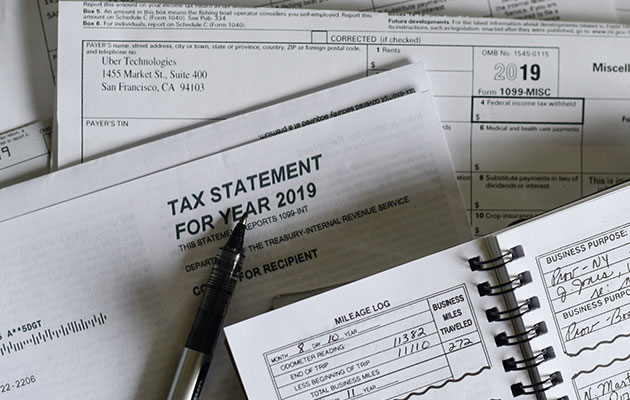-
Articles
Merger Control
1. INTRODUCTION
A business consolidation can: accelerate a business operator’s business, generate income, increase market share, reduce costs due to economies of scale and economies of increased products and service scopes, create bargaining power and increase customer base, thus increasing profit. A business consolidation can also reduce competitors in the market.
A business consolidation occurring between business operators in the same market (known as the ‘Horizontal Merger’), which acquires intellectual property, technology, tax benefits as well as acquisition of knowledgeable, talented and experienced personnel, will instantly and significantly accelerate such business operator’s business(es).
In order to reduce the potential negative effects to other operators and consumers, there needs to be more control over mergers amongst business operators in the form of legal measures; to empower the authorities to monitor this kind of business activity. In Thailand, mergers are controlled by the Trade Competition Act B.E. 2560 (2017) and its respective secondary legislations, i.e. Announcement of the Trade Competition Commission re: Criteria, Procedures and Conditions in Requesting for Merger Permission B.E. 2561 (2018); and Announcement of the Trade Competition Commission re: Criteria, procedures and conditions for Merger Notification B.E. 2561 (2018).
The merger control regime in Thailand is generally governed and enforced by the Trade Competition Commission (the “Commission”). Nevertheless, some industries are subject to specific merger control regimes, such as financial institutions, insurance, telecommunications and broadcasting. The merger control regime relating to these industries are governed and enforced by the Bank of Thailand, the Office of the Insurance Commission and the National Broadcasting and Telecommunication Commission, as the case maybe. These regulators generally have the authority to issue secondary legislations, permit applied-for mergers, impose conditions on permitted mergers and impose sanctions on non-compliant business operators. This article will discuss the merger control regime under the Trade Competition Act B.E. 2560 (2017) (the “Act”).
2. DEFINITION AND SCOPE OF MERGER
2.1. What types of business consolidations are subject to merger control under the Act?
Section 51, paragraph three of the Act determines the types of business consolidations which are subject to merger control, as follows:
- (1) Mergers resulting in one business remaining and the other business being terminated, or a new business coming into existence, e.g. X merging with Y, resulting in X remaining but Y being terminated; or X merging with Y and becoming Z as a new business.
- (2) Acquisition of all or part of significant assets of another business in order to control its policy, business administration, direction or management (this applies to an acquisition of assets wherein the value of the acquired assets is over 50% of the total assets’ value of another business operator), e.g. Grab acquiring all assets of Uber.
- (3) Acquisition of all or part of the shares of another business in order to control its policy, business administration, direction or management (in the case of a public company, it refers to an acquisition of 25% or more of the total voting shares of another business operator; whereas, in the case of a private company, it refers to an acquisition of over 50% of the total voting shares of another business operator).
These types of business consolidations will be collectively referred to as a ‘merger’.
2.2. What types of merger are regulated?
The merger control regime in Thailand is governed by Section 51 of the Act - under which regulated mergers are categorised into two types: those which require prior permission from the Commission; and those which only require notification to the TCC - and is applied to the following cases:
- a) A merger which may cause a monopoly or result in a dominant position of a merging business operator in a market must obtain prior permission from the Commission known as the “Pre-Merger Filing”). It is worth noting that if a business operator with a dominant position before a merger wishes to conduct a merger with a competitor in the same market or trading partner in a different market, and such business operator will become dominant after the merger; it must also apply for permission to carry out the merger..
- b) A merger conducted by any business operator which may substantially reduce competition in a market under the criteria prescribed in the Commission’ s announcement must notify the outcome of such merger to the Commission within seven days from the date of merger (“Date of merger” is defined as the date on which one business exists and another business ends or brings about a new business; the date on which transfer of asset ownership is completed, or the date on which share transfer is completed) (“Post-Merger Notification”).
3. PRE-MERGER OBLIGATION
3.1. What are the market share and sales turnover thresholds that are subject to the obligation of Pre-Merger Filing?
The threshold for Pre-Merger filing refers to a business operator having a dominant market position as prescribed in the Announcement of Trade Competition Commission Re: Criteria, Procedures and Conditions for Merger Notification BE 2561 (2018), which had a market share in the previous year of 50% or more and which has a sales turnover of at least Baht 1 billion; or any top three business operators which together have a market share in the previous year of 75% or more and have a sales income of at least Baht 1 billion (excluding any business operator having a market share in the previous year of lower than 10% or a sales turnover of lower than Baht 1 billion).
3.2. How is permission applied for and what supporting documents are required to be submitted to the Commission?
In requesting for permission to carry out a merger, a merging business operator must fill-in the required information in the application form and submit such to the OTCC, along with supporting documents as follows:
- (1) Merger plan and implementation period.
- (2) Details about the parties who wish to merge businesses and the parties whose business are merged, which must at least contain the shareholder structure, voting rights, total sales and market shares.
- (3) Results and analysis of businesses merging, which must at least contain the following documents:
- Analysis of shareholder structure and controlling power of the parties wishing to merge businesses in order to be considered on the policy relations or command authority before and after the merger.
- Analysis of market structure, products or services related to the parties who wish to merge businesses in order to evaluate the potential impact possibly occurring after the merger, which must at least include the following analysis result data:
- analysis of market structure before and after the merger;
- market scope;
- market shares of the entities that wish to merge businesses, from both before and after the merger;
- the sales turnover of the parties who wish to merge businesses, from both before and after the merger;
- assessment of impact on competitors after the merger in the following issues; and
- evaluation of the results of market performance after the merger.
- (4) The results of the study and analysis on factors under Section 52, paragraph two - which prescribes: “the Commission shall consider granting permission in recognition of a valid business-related necessity, as well as provide benefit in supporting a business operator that does not cause severe damage to the economy and no impact on the essential benefits consumers are entitled to as a whole” - are as follows:
- Business necessities in business and benefits for business promotion;
- Impact of economic damage; and
- Impact on important benefits that should be obtained by general consumers.
It should be noted that additional information and documents may be requested from the applicant and other parties by the Commission where necessary.
3.3. What is the review process and what is the timetable for that process?
Upon receipt of a completed application form for merger permission, all required supporting documents and the official filing fee from the applicant, the OTCC will forward the documents to the Commission within seven days. The Commission has a general timeframe of 90 days to complete its review and grant permission (with or without conditions) or reject the proposed merger. The Commission review timeframe above may be extended for an additional period of not more than 15 days. After the Commission’s decision is issued, the OTCC will inform the applicant within seven days thereof.
3.4. Can there be involvement of other parties in the review process?
The Commission is empowered to send letters to invite any person to provide facts, explanations, opinions, advice and other supplementary information for consideration of granting permission. In this regard, consumers and competitors may be invited to give information as and where required.
3.5. Does a merging business operator or third party have a right to appeal the Commission’s decision?
If the merging business operator does not agree with the Commission’s decision, it is entitled to challenge the decision by filing a lawsuit with the Administrative Court within 60 days from the date of being informed of such decision.
Furthermore, a third party who is directly affected by the Commission’s decision may appeal against such decision to the Administrative Court. For example, if the Commission grants permission for a proposed merger despite the fact that such merger may often cause an adverse effect on competition in the relevant market, it is possible that a competitor in the market may initiate a case against the Commission before the Administrative Court.
4. POST-MERGER OBLIGATIONS
4.1. What are the market share and sales turnover thresholds that are subject to the obligation of Post-Merger Control?
The type of merger which will be required to be notifies to the Commission is that of which the total sales amount of the merging business operator(s) is Baht 1 billion or more (but does not cause a monopoly or market domination). This is inclusive of the sales turnovers of the parties having a business relationship in policy or authority.
4.2. How can the Commission be notified and what supporting documents are required to be submitted?
To notify the Commission of the merger results, the business operator is required to fill-in the relevant information in the official Form of Notification of Merger Result, together with the following supporting documents:
- (1) Copy of merger-related documents which was submitted to the Department of Business Development;
- (2) Copy of documents submitted to the Office of the Securities and Exchange Commission in case of buying shares according to the tender offer;
- (3) Copy of documents related to the purchase of shares or assets, such as sales contracts and appraisal documents;
- (4) Minutes of the Executive Committee or shareholders who have a resolution to merge the business of each business operator, or documents showing the intention to merge businesses;
- (5) Other details related to the merger;
- (6) Annual meeting minutes and financial statements for the latest year that the auditor has certified for each business operator who has merged business for the past 3 years;
- (7) Copy of shareholder list of each business operator, both before and after the business merger; and
- (8) Power of attorney (if any).
Please note that the Post-Merger Obligation is compulsory. However, a merger for internal structure adjustment of business operators having a relationship in policy or authority is not required to notify the merger results.
SANCTION FOR NON-COMPLIANCE
5.1. What punishment shall be imposed on business operators for non-compliance of these pre and post-merger obligations?
For mergers which may result in a monopoly or the creation of a dominant market position for which prior permission from the Commission is required (pre-merger obligation), if the relevant business operators have concluded the transaction prior to permission being granted by the Commission, they can be subject to a maximum fine of 0.5% of the transaction value of the merger.
Furthermore, failure to notify the merger results will be subject to an administrative fine of not more than Baht 200,000 and a further fine of not more than Baht 10,000 per day for the entire period during which the merger results are not notified.
For these sanctions, in a case where a director, manager or any person responsible for the operation of the relevant business operator has the duty to instruct or perform some action or task but fails to instruct or perform such action or task, thus causing such non-compliance; such person shall also be subject to the punishment mentioned above.
Recommendation
Lastly, in considering the Pre-Merger Filing and Post-Merger Notification, it is advisable that parties consult with trade competition lawyers before taking further action. As described above, there will be a complicated process involved and a variety of supporting documents will need to be submitted in support of the filing or notification. A complete and appropriate set of required information and documents should be prepared before submission; otherwise, the review period will not begin, which may cause significant delays in the process. Clear and well substantiated understandings of the trade competition law and arguments can facilitate and fulfil these obligations.





